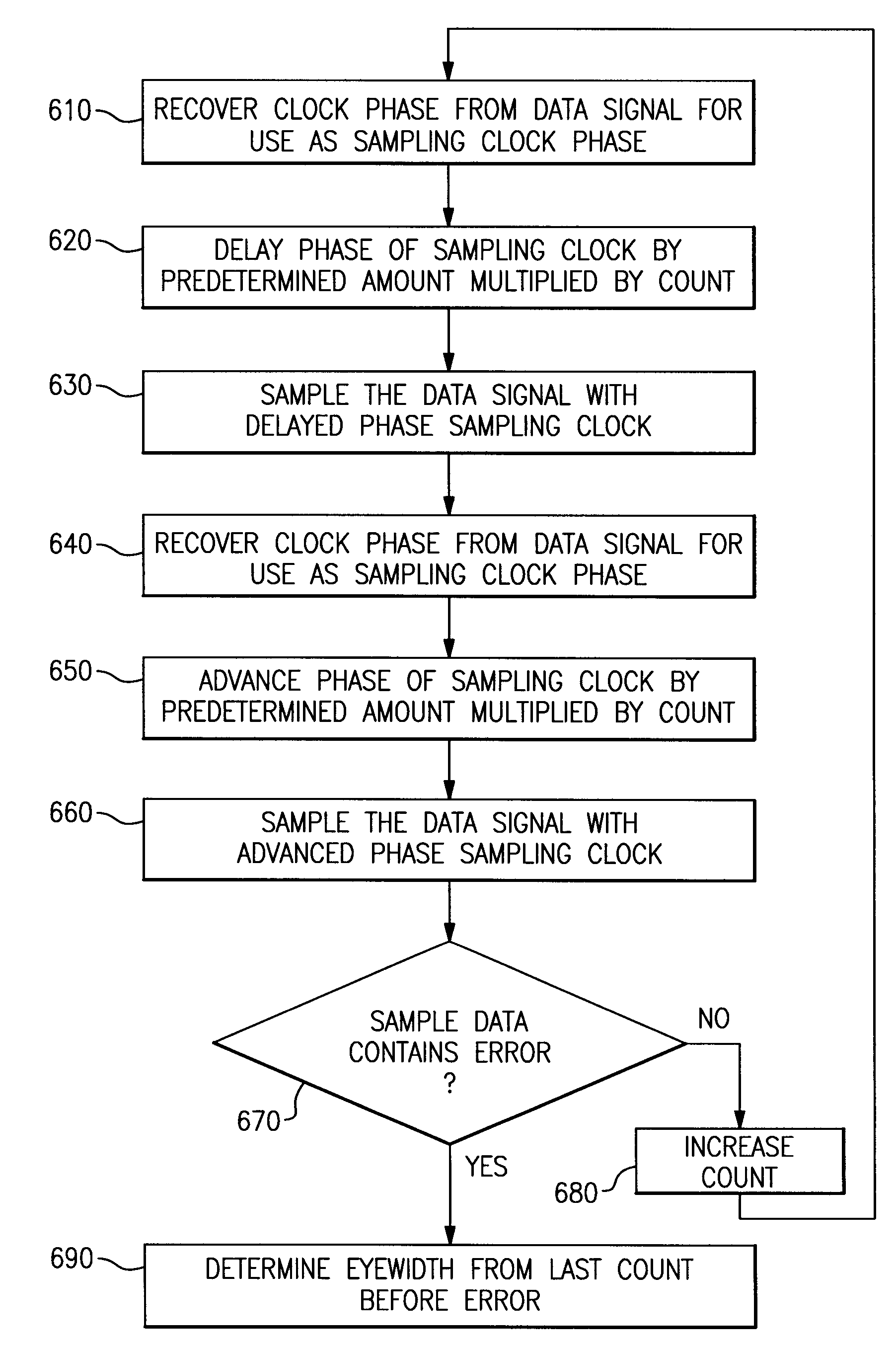System for measuring an eyewidth of a data signal in an asynchronous system
a data signal and asynchronous technology, applied in the field of data communication, can solve the problem of more prone to errors in reception of data signals
- Summary
- Abstract
- Description
- Claims
- Application Information
AI Technical Summary
Benefits of technology
Problems solved by technology
Method used
Image
Examples
Embodiment Construction
[0012]Jitter can be defined as observable uncertainty in the timing of rising and falling edge transitions of a digital data signal. Referring to FIG. 1, a data signal is illustrated in which bits 200a, 200b, 200c are transmitted sequentially. Jitter 202 is illustrated as uncertainty in the timing of the rising and falling edge transitions of the data signal. The eyewidth 201 of a data signal is defined as the amount of time between signal transitions during which the state of a single bit of the data signal can be reliably judged.
[0013]A receiver of the data signal uses a sampling clock to sample the state of the data signal at appropriate times to determine the states of the transmitted bits. Because of jitter, the timing at which the sampling clock samples the data signal must be controlled to avoid sampling near the jitter-prone edges of the data signal.
[0014]HSS cores which are utilized for inter-system communications between an edge of one system and can be designed to receive...
PUM
 Login to View More
Login to View More Abstract
Description
Claims
Application Information
 Login to View More
Login to View More - R&D
- Intellectual Property
- Life Sciences
- Materials
- Tech Scout
- Unparalleled Data Quality
- Higher Quality Content
- 60% Fewer Hallucinations
Browse by: Latest US Patents, China's latest patents, Technical Efficacy Thesaurus, Application Domain, Technology Topic, Popular Technical Reports.
© 2025 PatSnap. All rights reserved.Legal|Privacy policy|Modern Slavery Act Transparency Statement|Sitemap|About US| Contact US: help@patsnap.com



